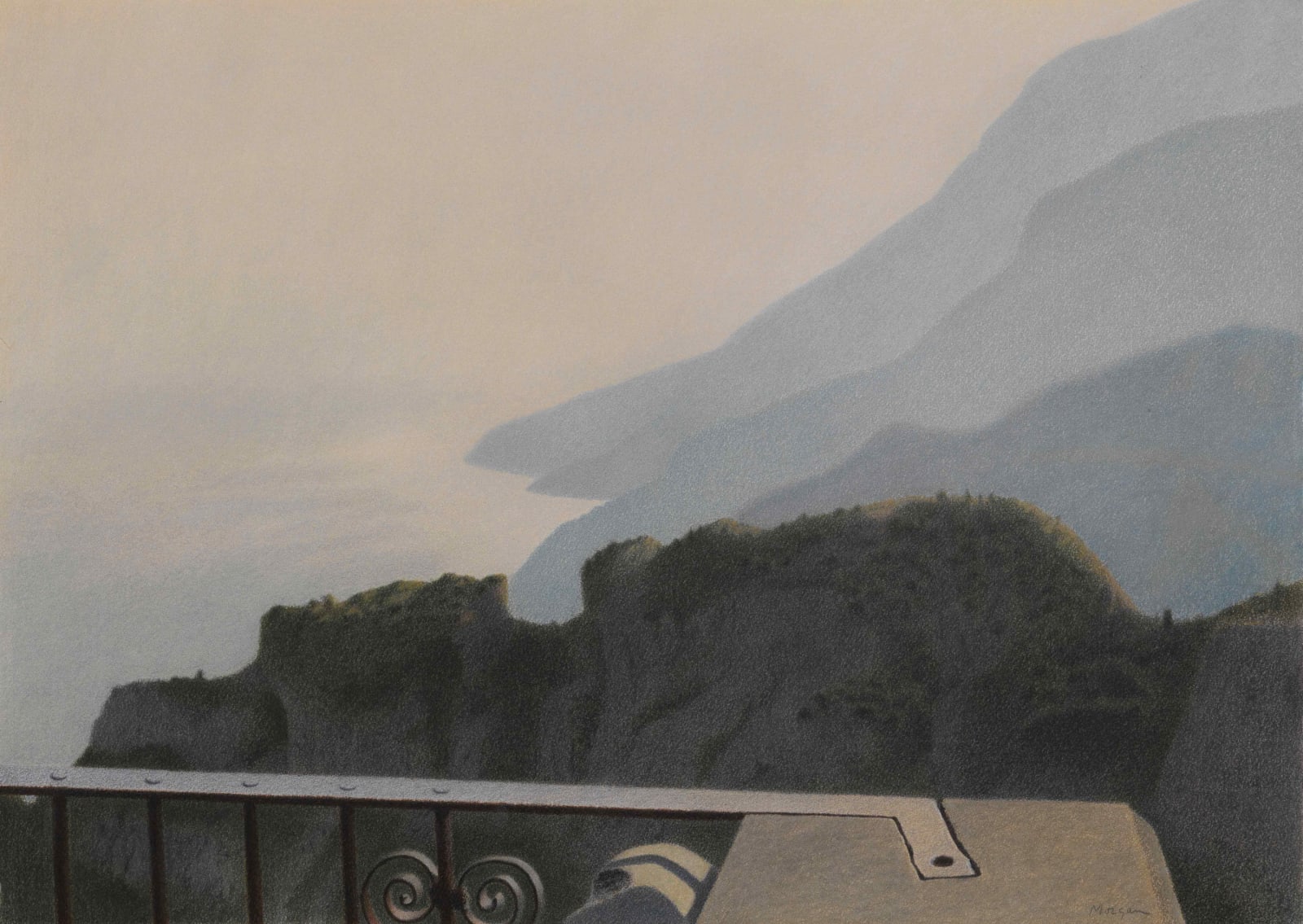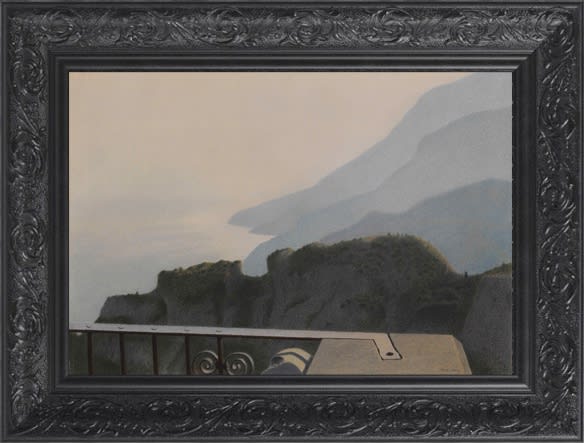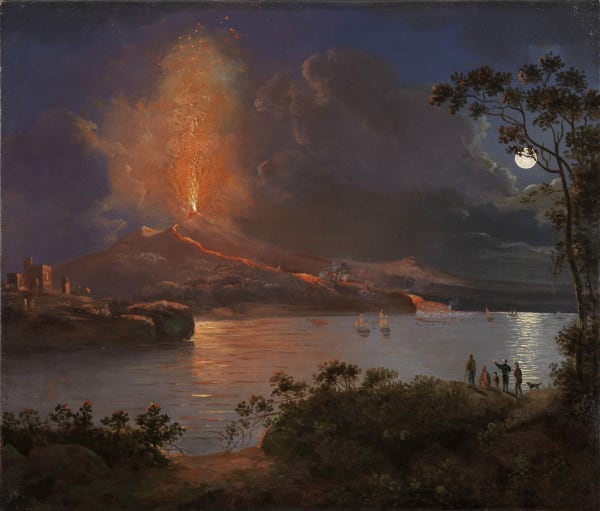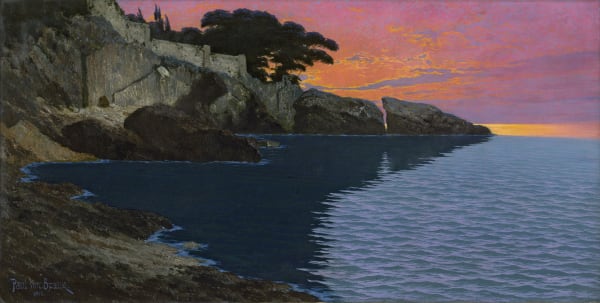

RANDALL MORGAN KNIGHTSTOWN, INDIANA 1920-SORRENTO 1994
SOLD
Randall Morgan was born in Knightstown, USA, in 1920. Enlisting in the Army during World War II, he was demobbed in 1945. Speaking a certain amount of Italian which he had picked up at college in Iowa, while in uniform he acted as an interpreter for former Italian prisoners of war, who became allies after Mussolini fell from power. It was in that capacity that he first docked in the port of Naples, on board a ship repatriating a group of former POWs. He was instantly enchanted by the Bay of Naples, struck by the fabulous light bathing the area, by the clear air and the clean blue sea. A postgraduate study grant awarded to him at the age of 29 gave him the opportunity to return to Italy with the intention of working at the American Academy in Rome. At that time of the year the Italian capital was particularly cold and so he decided to travel to Amalfi in the hope of encountering more clement weather. He was so dazzled by the magical lure of the Amalfi Coast, however, that he returned to Rome, packed his bags and moved to Castiglione, a lovely village close to Amalfi. He painted there until spring, but in the summer he transferred to Minori where he continued to paint. After producing a number of pictures, he went to New York in the hope of finding a gallery owner to represent him, which he did, in the person of J. B. Neumann.
Morgan was soon back in Italy, where he settled in Positano, but he travelled frequently to New York to show his work in a variety of exhibitions. In Positano he opened a painting workshop which he ran for eight years, teaching the art of painting to American students on holiday. As his chosen village on the Amalfi coast began to become increasingly crowded and worldly, with too many distractions to lure him away from his work, he sought another home in a more tranquil setting, eventually purchasing a house in Torca in 1964, in which he lived until his death in 1994.
The picture presented here, painted in Ravello in 1976, depicts the Amalfi Coast, the part of Italy he loved best and where he spent most of his life. While his subject matter varied, he never strayed from the foreshortened view, whether in his figure painting or in his landscapes.
Adopting a light, rarefied technique, he conveys a feeling at once of romanticism and of truth. His work, often painted from life, is enchanting thanks precisely to the faithfulness of his description. We are attracted by the atmosphere of the subject portrayed thanks to his skilled interpretation of a day lit by the romantic light of the Amalfi coast, possibly very early in the morning, as we lean on a terrace – a small, seemingly inconsequential detail built into the picture, yet it leaves us in no doubt that we are observing the view from a very definite vantage point, a strong, stable and fixed point in what might otherwise appear to be nothing more than a landscape.
Join the mailing list
Subscribe to our newsletter to receive all the news about exhibitions, fairs and new acquisitions!




